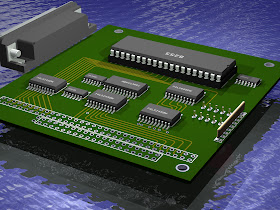Today I finished making the blueprints of an electrode holder for an wide-field fluorescence microscope that we have at work. Nest week I'll take this to the workshop and I hope that they will quickly make the whole thing, so I can present it to you ;). And do some cool science of course.
I hope you like it. The electrode holder/manipulator consists of a base plate and top plate connected with springs and a micrometer head for controlling the height of the electrode that will be attached to the insulating teflon holder.
I hope you like it. The electrode holder/manipulator consists of a base plate and top plate connected with springs and a micrometer head for controlling the height of the electrode that will be attached to the insulating teflon holder.







